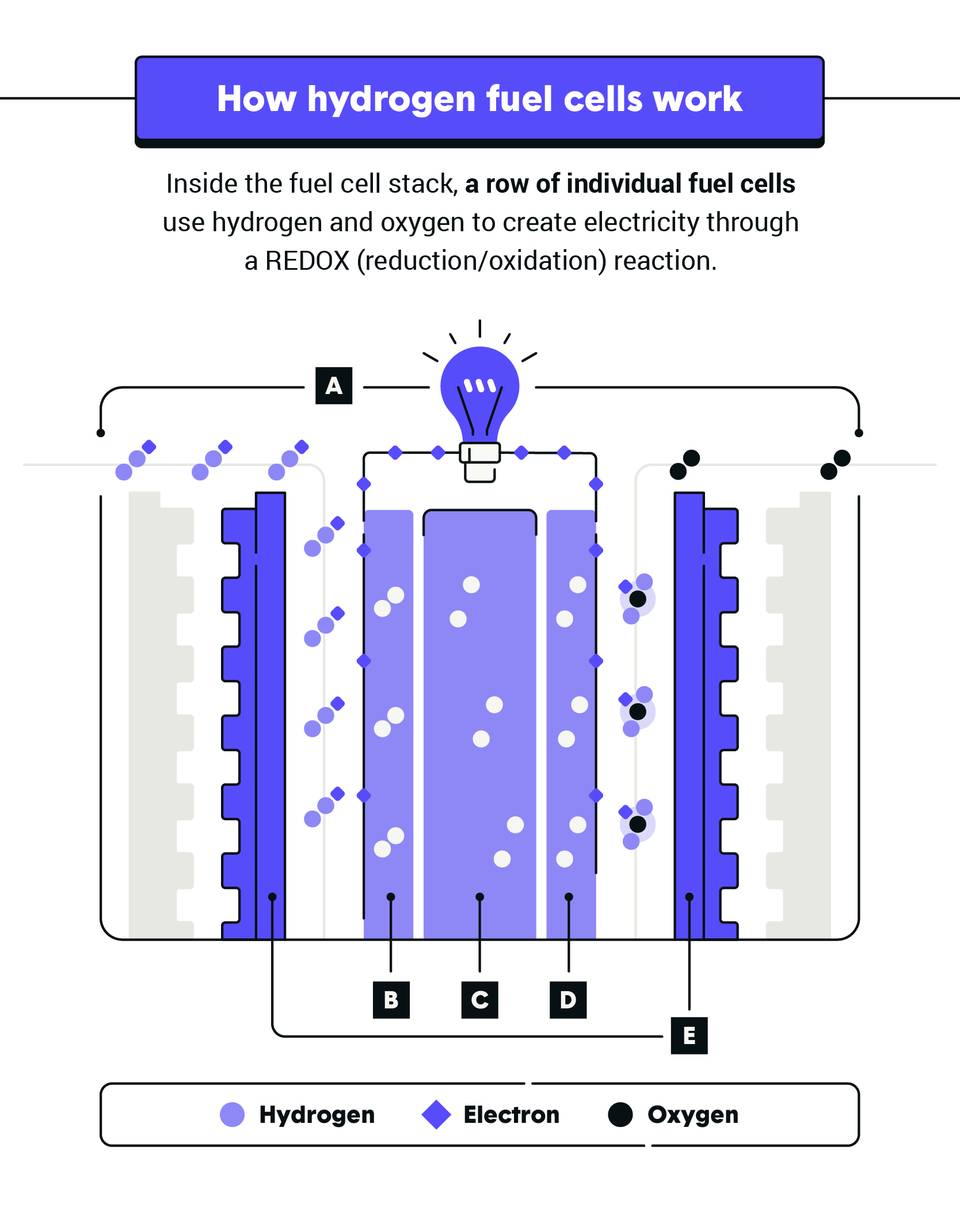Hydrogen cars (H2) are vehicles that use hydrogen fuel for motive power, making them energy-efficient alternatives to gas-powered cars. Hydrogen fuel cells use hydrogen and oxygen to create electricity that powers a motor.
Companies such as Toyota are investing in this fuel of the future as an alternative to harmful gas or electric-powered vehicles. Currently, there are an estimated 11,000 hydrogen cars on the road today.
Why hydrogen? The U.S., Japan, China, and South Korea are making big investments in the future of hydrogen as an alternative and more sustainable fuel source. Toyota is leading the research in this field and is working to make a hydrogen vehicle future attainable and affordable. Read on to discover how hydrogen fuel cells work, the pros and cons of H2 vehicles, and more, or jump to our infographic for a visual aid.





